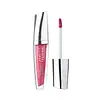What's inside
What's inside
 Key Ingredients
Key Ingredients

 Benefits
Benefits

 Concerns
Concerns

 Ingredients Side-by-side
Ingredients Side-by-side

Water
Skin ConditioningOctyldodecanol
EmollientDimethicone
EmollientAlcohol Denat.
AntimicrobialAcrylates Copolymer
Sorbitan Stearate
EmulsifyingEthylcellulose
Behenyl Alcohol
EmollientPentylene Glycol
Skin ConditioningActinidia Chinensis Fruit Extract
EmollientCarica Papaya Fruit Extract
Skin ConditioningCitrus Paradisi Fruit Extract
Skin ConditioningCocos Nucifera Fruit Extract
EmollientMangifera Indica Fruit Extract
Skin ConditioningPsidium Guajava Fruit Extract
AstringentPolysorbate 60
EmulsifyingSilica
AbrasiveSodium Acrylate/Sodium Acryloyldimethyl Taurate Copolymer
Emulsion StabilisingDiisostearyl Malate
EmollientPolyglyceryl-2 Triisostearate
EmulsifyingIsohexadecane
EmollientPolysorbate 80
EmulsifyingPolyglyceryl-2 Diisostearate
EmulsifyingSorbitan Oleate
EmulsifyingEthylhexylglycerin
Skin ConditioningButylene Glycol
HumectantDisodium EDTA
Phenoxyethanol
PreservativeParfum
MaskingAroma
CI 77891
Cosmetic ColorantCI 77491
Cosmetic ColorantCI 15850
Cosmetic ColorantCI 17200
Cosmetic ColorantCI 15985
Cosmetic ColorantCI 77499
Cosmetic ColorantCI 45410
Cosmetic ColorantWater, Octyldodecanol, Dimethicone, Alcohol Denat., Acrylates Copolymer, Sorbitan Stearate, Ethylcellulose, Behenyl Alcohol, Pentylene Glycol, Actinidia Chinensis Fruit Extract, Carica Papaya Fruit Extract, Citrus Paradisi Fruit Extract, Cocos Nucifera Fruit Extract, Mangifera Indica Fruit Extract, Psidium Guajava Fruit Extract, Polysorbate 60, Silica, Sodium Acrylate/Sodium Acryloyldimethyl Taurate Copolymer, Diisostearyl Malate, Polyglyceryl-2 Triisostearate, Isohexadecane, Polysorbate 80, Polyglyceryl-2 Diisostearate, Sorbitan Oleate, Ethylhexylglycerin, Butylene Glycol, Disodium EDTA, Phenoxyethanol, Parfum, Aroma, CI 77891, CI 77491, CI 15850, CI 17200, CI 15985, CI 77499, CI 45410
Polybutene
Octyldodecyl Stearoyl Stearate
EmollientDiisostearyl Malate
EmollientSynthetic Beeswax
Emulsion StabilisingTriisodecyl Trimellitate
EmollientTriheptanoin
Skin ConditioningIsocetyl Stearate
EmollientAdipic Acid/Diglycol Crosspolymer
Silica Dimethyl Silylate
EmollientDextrin Palmitate
EmulsifyingCalcium Sodium Borosilicate
Silica Silylate
EmollientPunica Granatum Seed Oil
EmollientGlyceryl Behenate/Eicosadioate
EmollientSynthetic Wax
AbrasiveParfum
MaskingTocopheryl Acetate
AntioxidantDecylene Glycol
Skin ConditioningEthylhexyl Palmitate
EmollientMica
Cosmetic ColorantTin Oxide
AbrasiveTrihydroxystearin
Skin ConditioningSodium Hyaluronate
HumectantGlucomannan
Skin ConditioningCI 77491
Cosmetic ColorantCI 77492
Cosmetic ColorantCI 77163
Cosmetic ColorantCI 15850
Cosmetic ColorantCI 77891
Cosmetic ColorantPolybutene, Octyldodecyl Stearoyl Stearate, Diisostearyl Malate, Synthetic Beeswax, Triisodecyl Trimellitate, Triheptanoin, Isocetyl Stearate, Adipic Acid/Diglycol Crosspolymer, Silica Dimethyl Silylate, Dextrin Palmitate, Calcium Sodium Borosilicate, Silica Silylate, Punica Granatum Seed Oil, Glyceryl Behenate/Eicosadioate, Synthetic Wax, Parfum, Tocopheryl Acetate, Decylene Glycol, Ethylhexyl Palmitate, Mica, Tin Oxide, Trihydroxystearin, Sodium Hyaluronate, Glucomannan, CI 77491, CI 77492, CI 77163, CI 15850, CI 77891
 Reviews
Reviews

Ingredients Explained
These ingredients are found in both products.
Ingredients higher up in an ingredient list are typically present in a larger amount.
Ci 15850 is the pigment color red. It is an azo dye and created synthetically.
Azo dyes need to be thoroughly purified before use. This allows them to be more stable and longer-lasting.
This ingredient is common in foundations, lipsticks, and blushes. This color is described as brown/orangey red.
It has many secondary names such as Red 6 and Red 7. According to a manufacturer, Red 6 usually contains aluminum.
Learn more about CI 15850Ci 77491 is also hydrated iron III oxide. It's sole purpose is to give a red/pink hue to products.
Iron III oxides are classified as inorganic chemicals for coloring.
Synthetically created Ci 77491 is considered safer than those naturally found. This is because the synthetically created version may contain less impurities. Iron oxides are generally non-toxic and non-allergenic.
Learn more about CI 77491Ci 77891 is a white pigment from Titanium dioxide. It is naturally found in minerals such as rutile and ilmenite.
It's main function is to add a white color to cosmetics. It can also be mixed with other colors to create different shades.
Ci 77891 is commonly found in sunscreens due to its ability to block UV rays.
Learn more about CI 77891Diisostearyl Malate is an emollient and most often used in lip products. It comes from isostearyl alcohol, a fatty acid, and malic acid, an AHA.
As an emollient, Diisostearyl Malate helps create a thin film on your skin to trap moisture in. This helps keep your skin soft and smooth.
Parfum is a catch-all term for an ingredient or more that is used to give a scent to products.
Also called "fragrance", this ingredient can be a blend of hundreds of chemicals or plant oils. This means every product with "fragrance" or "parfum" in the ingredients list is a different mixture.
For instance, Habanolide is a proprietary trade name for a specific aroma chemical. When used as a fragrance ingredient in cosmetics, most aroma chemicals fall under the broad labeling category of “FRAGRANCE” or “PARFUM” according to EU and US regulations.
The term 'parfum' or 'fragrance' is not regulated in many countries. In many cases, it is up to the brand to define this term.
For instance, many brands choose to label themselves as "fragrance-free" because they are not using synthetic fragrances. However, their products may still contain ingredients such as essential oils that are considered a fragrance by INCI standards.
One example is Calendula flower extract. Calendula is an essential oil that still imparts a scent or 'fragrance'.
Depending on the blend, the ingredients in the mixture can cause allergies and sensitivities on the skin. Some ingredients that are known EU allergens include linalool and citronellol.
Parfum can also be used to mask or cover an unpleasant scent.
The bottom line is: not all fragrances/parfum/ingredients are created equally. If you are worried about fragrances, we recommend taking a closer look at an ingredient. And of course, we always recommend speaking with a professional.
Learn more about Parfum